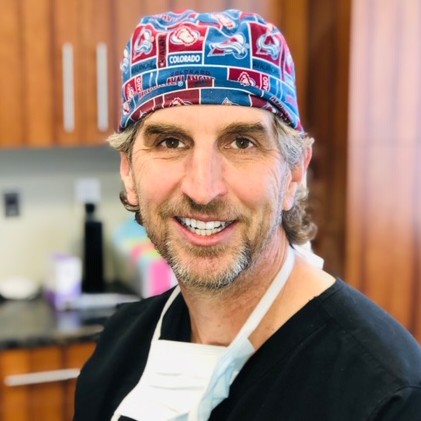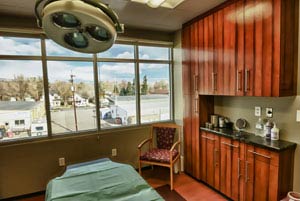Breast augmentation is a transformative procedure, but the recovery process is just as crucial to achieving the desired results. Understanding what to expect in the first 14 days post-surgery can significantly impact your overall experience and outcomes. While many resources provide a generic overview, this guide delves into the nuanced recovery stages that are seldom discussed.
From immediate post-operative care to the subtle changes that occur as you approach the two-week mark, knowing the specifics can help you manage expectations, enhance your comfort, and ensure a smoother recovery journey. This article aims to provide a detailed timeline and expert insights into the critical first 14 days following breast augmentation.
Day 1-3: Immediate Post-Operative Period
The first three days following breast augmentation surgery are crucial for setting the foundation for a smooth recovery. During this period, patients typically experience the most discomfort and swelling, which is managed with prescribed pain medications and rest. It’s essential to follow your surgeon’s instructions closely to minimize complications.
Pain Management and Rest
Immediately after surgery, you’ll likely feel groggy from the anesthesia and may experience tightness and soreness in the chest area. Pain levels vary, but most patients report feeling significant discomfort that is manageable with prescribed pain relief. Rest is paramount; your body needs this time to start the healing process. Avoid any strenuous activities, lifting, or sudden movements that could strain your chest muscles.
Bandages and Dressings
Your breasts will be bandaged, and you might be fitted with a surgical bra to support the new breast shape and reduce swelling. The dressings help protect the incisions from infection and provide necessary compression. It’s important not to remove these bandages unless instructed by your surgeon during the first follow-up appointment.
Mobility and Activity
While bed rest is advised, short, gentle walks around your home can aid circulation and prevent blood clots. Moving your arms slightly to maintain some mobility without straining is also recommended. Most surgeons advise against showering until the dressings are removed, usually within the first few days post-surgery.
Monitoring for Complications
Be vigilant for signs of complications such as severe pain unrelieved by medication, excessive swelling, bleeding, or unusual discharge from the incision sites. Contact your surgeon immediately if you notice any of these symptoms. Early detection and intervention are key to preventing more serious issues.
This initial recovery phase requires patience and adherence to your surgeon’s guidelines to ensure a positive outcome.
Day 4-7: Early Recovery
As you enter the early recovery phase, significant improvements in comfort and mobility typically begin. Swelling and bruising may persist but should gradually decrease. Pain usually lessens, allowing many patients to reduce their reliance on pain medications.
Gradual Increase in Activity
Light activities can be reintroduced, but strenuous exercises and heavy lifting remain off-limits. Gentle walks and mild stretching help promote circulation and prevent stiffness without overexerting the healing tissues.
Follow-Up Appointments
This period often includes a follow-up visit with your surgeon to check the incision sites and overall progress. Your surgeon may remove or change bandages, inspect the healing process, and provide additional instructions for continued recovery.
Breast Appearance Changes
Expect to notice changes in the appearance of your breasts, including a more natural shape as swelling subsides. Any feelings of tightness or unusual sensations are normal and typically resolve as your body adjusts to the implants. It’s essential to continue wearing the surgical bra to support healing.
Day 8-10: Transition Phase
During the transition phase, many patients experience notable improvements in comfort and mobility. Swelling continues to decrease, and bruising should begin to fade. It’s a period where the initial tightness in the chest starts to subside, allowing for greater ease in daily movements.
Adjustments to Activity Levels
Patients can gradually increase their activity levels but should still avoid heavy lifting and vigorous exercise. Light household chores and longer walks can be incorporated into your routine, provided they do not cause discomfort.
Appearance and Sensation
Breasts may still feel firm and appear high on the chest, but they will gradually settle into a more natural position. Sensations like tingling or itching around the incision sites are common as nerves begin to heal. These changes indicate normal recovery and should not cause alarm.
Psychological Adjustments
This phase also involves psychological adjustments as patients start feeling more like themselves. Any emotional fluctuations are normal, and support from friends, family, and your surgical team can be beneficial. Keeping a positive outlook and focusing on gradual improvements can enhance the overall recovery experience.
Day 11-14: Moving Towards Normalcy
As you approach the end of the second week post-surgery, you will likely notice a significant return to normalcy in your daily activities. Swelling and bruising should continue to diminish, and discomfort will further decrease, allowing you to feel more comfortable and confident in your movements.
Increased Comfort and Activity
During this period, many patients find that they can resume most of their normal activities, excluding strenuous exercises and heavy lifting. It’s essential to listen to your body and avoid pushing yourself too hard, as overexertion can impede healing.
Settling of Implants
Your breasts will continue to settle into a more natural position. The initial firmness and high placement of the implants will gradually soften, and the breasts will take on a more natural appearance. Minor asymmetries and changes in sensation are common and typically resolve over time.
Final Stages of Early Healing
By this stage, the incisions should be healing well, although it’s crucial to follow your surgeon’s care instructions to minimize scarring. Continue wearing your surgical bra or any recommended support garments to aid in the healing process and ensure optimal results.
Common Concerns and How to Address Them
During the recovery process, patients often have several concerns. Understanding these issues and how to address them can ensure a smoother recovery and peace of mind.
- Pain and Discomfort: While some discomfort is normal, severe or persistent pain should be discussed with your surgeon. Pain management techniques, including medication and rest, can help alleviate discomfort.
- Swelling and Bruising: Swelling and bruising are common and typically decrease over time. Using cold compresses and wearing a compression garment can help reduce these symptoms.
- Incision Care: Proper incision care is crucial to prevent infection and minimize scarring. Follow your surgeon’s instructions on cleaning and dressing the incision sites.
- Asymmetry: Slight asymmetry is normal during the initial healing phase. If significant asymmetry persists, consult your surgeon for evaluation.
- Numbness and Tingling: Temporary changes in sensation, such as numbness and tingling, are common and usually resolve as nerves heal. If these sensations persist, discuss them with your surgeon.
Addressing these common concerns promptly and effectively can help ensure a successful recovery and optimal results. Always communicate with your surgical team if you have any questions or notice unusual symptoms.
Tips for Optimal Recovery
Ensuring an optimal recovery after breast augmentation involves more than just following your surgeon’s basic instructions. Here are some advanced tips to enhance your healing process:
- Stay Hydrated: Drink plenty of water to help flush out anesthesia and reduce swelling.
- Balanced Diet: Eat a diet rich in proteins, vitamins, and minerals to support tissue repair and immune function.
- Elevate Your Upper Body: Sleep with your upper body slightly elevated to reduce swelling and discomfort.
- Gentle Movements: Engage in light activities like walking to promote circulation without straining the surgery site.
- Avoid Smoking and Alcohol: These can impede healing and increase the risk of complications.
- Wear Support Garments: Consistently wear your surgical bra or compression garment to aid in proper implant positioning and support healing tissues.
- Massage Techniques: If recommended by your surgeon, gentle breast massages can help reduce stiffness and improve blood flow.
Implementing these tips can significantly impact the quality and speed of your recovery, leading to better overall results and a smoother healing experience. Always consult with your surgeon before making any changes to your post-operative care routine.
Conclusion
Understanding the stages of recovery following breast augmentation surgery is crucial for achieving the best possible results. By knowing what to expect from day one to day fourteen, you can better prepare for your journey, manage any discomfort, and take proactive steps to ensure a smooth recovery.
If you have any questions or are considering breast augmentation, our team at Boulder Valley Plastic Surgery is here to help. Contact us at (303) 449-6666 to schedule a consultation and begin your path to enhanced confidence and beauty.



